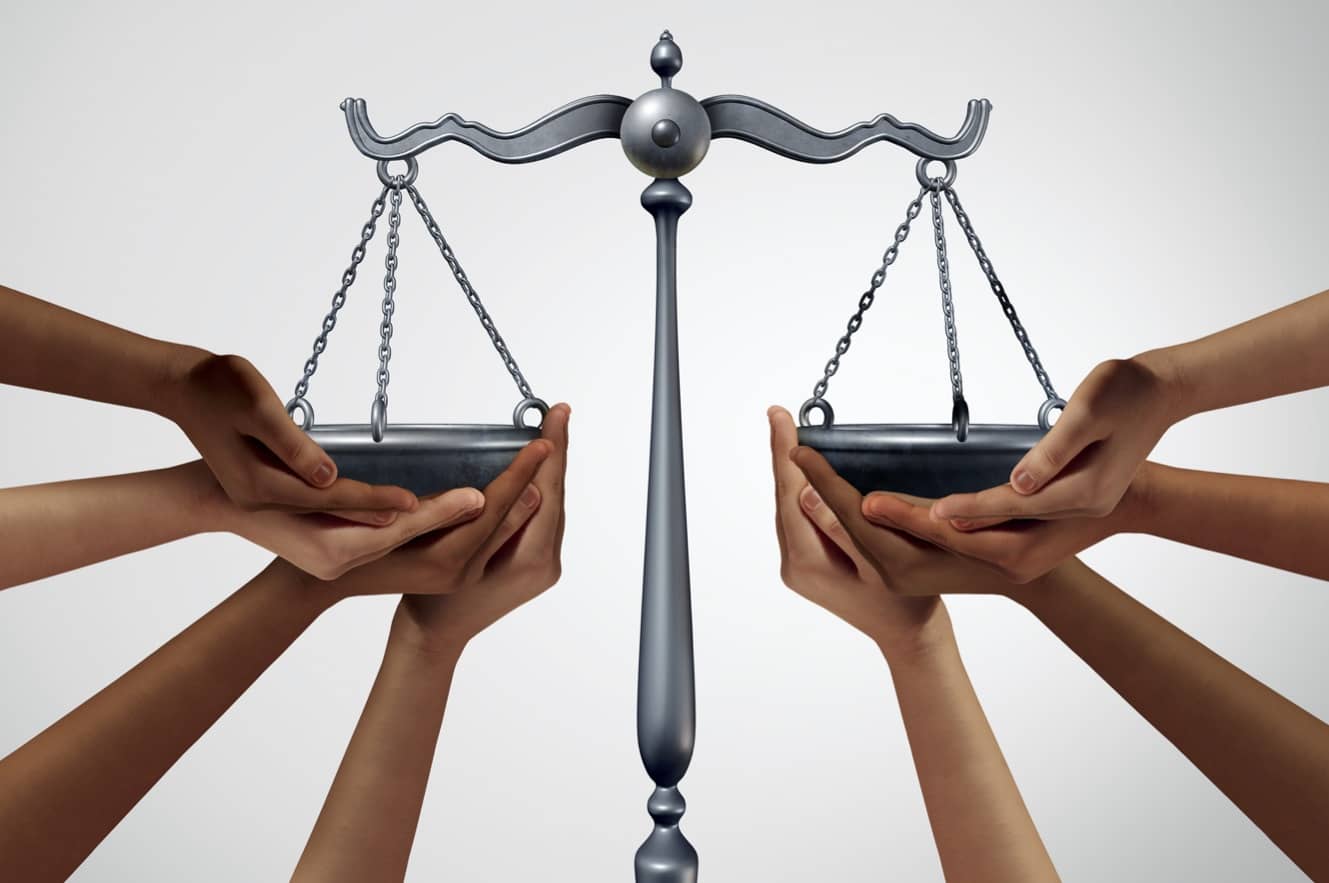
www.buildingsandcities.org/insights/commentaries/climate-justice-mandate.html
A Dual Mandate for Climate Justice and Climate Protection

Design
professionals know that buildings, cities, and infrastructure are central to
the challenge of climate change. Most embrace the need to dramatically improve
performance to support the shared goals for climate protection. Joel Ann Todd,
Christopher R. Pyke and Susan Kaplan (who are working on USGBC's All In: Building Equity Together) reflect on the B&C special
issue CLIMATE JUSTICE: THE ROLE OF THE BUILT ENVIRONMENT. Acting on social equity issues is a vital
professional responsibility - especially to protect those made vulnerable or
disadvantaged by climate change.
Introduction
Many authors have explored connections between climate protection, climate justice, inequality, and related issues (Baborska-Narozny et al. 2020; Klinsky and Mavrogianni, 2020). This has included consideration of new responsibilities for design professionals as well as the linkages between climate change and inequity (Janda and Parag, 2013). These authors underscore the urgency for action. We believe that these concepts would be more impactful with a broader view of climate justice, one that expanded to the root causes of inequity. Approaching climate justice with a broader perspective of social inequity and injustice allows practitioners to address the vulnerabilities of people to climate change that are caused or exacerbated by disparities in income, health status and access to care, education, housing security, food security, and other factors. While not all of these inequities are within the scope of every building project, practitioners have a responsibility to look beyond a narrow focus for opportunities to strengthen and build more resilient communities and individuals (Mondaine and Lee, 2020).
The design professions have been slow to recognize the built environment's impacts on vulnerable people. The meaning of professionalism entails obligations to civil society: to simultaneously promote social equity/environmental justice and climate protection. A moral and, in turn, professional responsibility exists to prevent, mitigate, and repair unjust, inequitable systems, structures, and practices for the poor, elderly, disabled and other disenfranchised and vulnerable populations (Klinsky and Mavrogianni, 2020).
Social equity and environmental justice are not inevitable, co-benefits of climate action. They require deliberate and sustained action.
The Buildings & Cities special issue Climate Justice: The Role of the Built Environment provides a sound basis for these responsibilities and actions that arise from them. It raises the questions of how practitioners can and should act to promote equity while addressing the climate challenge.
A practical definition of equity
We argue for a broad and holistic view of climate justice and equity. Admittedly, it is difficult to provide a single, general purpose definition of equity. However, for our purposes, a simple, practical definition is that equity is: 'Just and fair inclusion into a society in which all can participate, prosper, and reach their full potential. Unlocking the promise of the nation by unleashing the promise in us all.' (PolicyLink) The inequities and disparities that can lead to greater vulnerability to climate change should all be considered, including race, ethnicity, nationality, gender, differing abilities, age, health status, income, and other factors that can affect 'just and fair inclusion' and ability to 'participate and prosper'.
Built environment professionals
Built environment professionals are
involved in planning, design, specification, construction, operation,
maintenance and refurbishment of places - spaces, buildings, communities and
cities. They have unique access and impact on policy, regulation, zoning,
design, construction, programming and operations (Janda and Parag, 2013). This
privileged position affords the possibility to create better places not only
for the environment, but for all people.
To create appropriate conditions for climate justice, professionals must:
- Increase awareness of equity issues through professional development and engagement with stakeholders.This means professionals need to increase understanding and skills and change existing processes to give 'voice' to a wider range of stakeholders and local communities.
- Prioritize information, data collection, and community engagement to understand the context and consequences of actions before, during and after a project. This means not ignoring circumstances and 'indirect' impacts.
- Work for positive change in procurement, program, planning, design, construction and operation as professional champions for better outcomes for people (especially the most vulnerable) and the environment.
What is the practitioner's sphere of influence?
A major factor that may discourage practitioners is the scope and breadth of 'social justice and equity.' In our work over the past decade, primarily with the US Green Building Council, we have found that 'social justice and equity' becomes more approachable when this question is posed: "justice and equity for whom?" In turn, practitioners can consider how the needs of these groups can be addressed within their capabilities and sphere of influence. This provides a practical approach to identifying opportunities for action:
- Organizational - How does the practitioner's firm manage diversity and inclusion, equity in pay, apprenticeships/internships, maybe even selection of more equitable projects?
- Project teams - How can projects work with more minority and local firms, mentor students from disadvantaged neighborhoods, specify health and safety procedures for construction/maintenance workers, etc.?
- Community: design, development, and operations - Can design processes and proposals be in service to the community and respond to local needs? Can planning and design be co-produced with the community - especially those must vulnerable? Can proposals ensure training, employment and investment in the local economy? Will development displace local or vulnerable people? How can professionals better understand that good intentions may have unintended (and sometimes invisible) negative impacts on vulnerable people (cf Barborska-Navrozny et al, 2020) ?
- Building occupants and visitors - How can the project be accessible, inclusive, and welcoming to all? How can the project meet specific needs of occupants and visitors? Can project design support health for all, including maintenance and other service workers?
- Supply chain, communities and workers - Can practitioners examine supply chains to ensure respect for human rights of workers as well as health, safety, and fairness for affected frontline communities? Can supply chains foster the local economy with training and employment?
What can built environment professionals do?
Promoting equity has been difficult for several reasons: equity can be difficult to define, strategies for specific projects can be difficult to identify, relevant management systems don't yet exist, and measurement is difficult and usually absent.
There are solutions to all of these challenges. We recommend:
- Commitment: Start by placing an explicit priority on social equity. Establish and
communicate equity values as an organizational priority and goal for projects.
- Leadership: Create the foundation for success by empowering a leader or team to
take action. Someone must be in charge and accountable.
- Awareness: Understand the situation on the ground, taking action to collect
data and engage the community - listening is important. Use the resulting
information to establish a clear framework to prioritize needs and plan a
coordinated sequence of actions - while continuing to collaborate with the
community.
- Action: Follow through with tangible on-the-ground action. Follow up to ameliorate concerns and unintended consequences after a project is completed.
- Reflection: Go back to evaluate outcomes with relevant measurement and analysis. Feedback improves practice. Be transparent and share findings with the community.
This approach can form the basis for a systematic, iterative process to promote social equity and environmental justice. This can enable professionals to address new issues in collaboration with new partners and stakeholders.
Our recommendations for action add to calls and models of action by authors in the B&C special issue 'Climate Justice: The Role of the Built Environment'. They align with respect to the urgency for action, the opportunity for positive impact, and, ultimately, a moral imperative for professionals to use their skills and privileged positions to address inequitable impacts and benefits of their work. In other words, we recognize the need. We have the means to act, and, as professionals, we have a duty to act. As we have described here, this begins with an explicit effort to build skill and awareness. This is followed by a systematic process of prioritization, execution, and evaluation -- similar to the processes we use for many design and engineering issues.
References
Baborska-Narozny, M., Szulgowska-Zgrzywa, M., Mokrzecka, M., Chmielewska, A., Fidorow-Kaprawy, N., Stefanowicz, E., Piechurski, K. & Laska, M. (2020). Climate justice: air quality and transitions from solid fuel heating. Buildings and Cities, 1(1), 120-140. DOI: http://doi.org/10.5334/bc.23
Janda, K. and Parag, Y. (2013). A middle-out approach for improving energy performance in buildings. Building Research & Information, 41(1), 39-50.
Klinsky, S., & Mavrogianni, A. (2020). Climate justice and the built environment. Buildings and Cities, 1(1), 412-428. DOI: http://doi.org/10.5334/bc.65
Mondaine, E. D. and Lee, M. (2020). Beyond theory: climate justice in practice. [commentary] Buildings and Cities. http://bit.ly/3pe6Hhr
PolicyLink (2018). Equity Manifesto. https://www.policylink.org/sites/default/files/pl_sum15_manifesto_FINAL_2018.pdf
Latest Peer-Reviewed Journal Content
Youth engagement in urban living labs: tools, methods and pedagogies
N Charalambous, C Panayi, C Mady, T Augustinčić & D Berc
Co-creating urban transformation: a stakeholder analysis for Germany’s heat transition
P Heger, C Bieber, M Hendawy & A Shooshtari
Placemaking living lab: creating resilient social and spatial infrastructures
M Dodd, N Madabhushi & R Lees
Church pipe organs: historical tuning records as indoor environmental evidence
B Bingley, A Knight & Y Xing
A framework for 1.5°C-aligned GHG budgets in architecture
G Betti, I Spaar, D Bachmann, A Jerosch-Herold, E Kühner, R Yang, K Avhad & S Sinning
Net zero retrofit of the building stock [editorial]
D Godoy-Shimizu & P Steadman
Co-learning in living labs: nurturing civic agency and resilience
A Belfield
The importance of multi-roles and code-switching in living labs
H Noller & A Tarik
Researchers’ shifting roles in living labs for knowledge co-production
C-C Dobre & G Faldi
Increasing civic resilience in urban living labs: city authorities’ roles
E Alatalo, M Laine & M Kyrönviita
Co-curation as civic practice in community engagement
Z Li, M Sunikka-Blank, R Purohit & F Samuel
Preserving buildings: emission reductions from circular economy strategies in Austria
N Alaux, V Kulmer, J Vogel & A Passer
Urban living labs: relationality between institutions and local circularity
P Palo, M Adelfio, J Lundin & E Brandão
Living labs: epistemic modelling, temporariness and land value
J Clossick, T Khonsari & U Steven
Co-creating interventions to prevent mosquito-borne disease transmission in hospitals
O Sloan Wood, E Lupenza, D M Agnello, J B Knudsen, M Msellem, K L Schiøler & F Saleh
Circularity at the neighbourhood scale: co-creative living lab lessons
J Honsa, A Versele, T Van de Kerckhove & C Piccardo
Positive energy districts and energy communities: how living labs create value
E Malakhatka, O Shafqat, A Sandoff & L Thuvander
Built environment governance and professionalism: the end of laissez-faire (again)
S Foxell
Co-creating justice in housing energy transitions through energy living labs
D Ricci, C Leiwakabessy, S van Wieringen, P de Koning & T Konstantinou
HVAC characterisation of existing Canadian buildings for decarbonisation retrofit identification
J Adebisi & J J McArthur
Simulation and the building performance gap [editorial]
M Donn
Developing criteria for effective building-sector commitments in nationally determined contributions
P Graham, K McFarlane & M Taheri
Join Our Community

The most important part of any journal is our people – readers, authors, reviewers, editorial board members and editors. You are cordially invited to join our community by joining our mailing list. We send out occasional emails about the journal – calls for papers, special issues, events and more.
We will not share your email with third parties. Read more



Latest Commentaries
COP30 Report
Matti Kuittinen (Aalto University) reflects on his experience of attending the 2025 UN Conference of the Parties in Belém, Brazil. The roadmaps and commitments failed to deliver the objectives of the 2025 Paris Agreement. However, 2 countries - Japan and Senegal - announced they are creating roadmaps to decarbonise their buildings. An international group of government ministers put housing on the agenda - specifying the need for reduced carbon and energy use along with affordability, quality and climate resilience.
Building-Related Research: New Context, New Challenges
Raymond J. Cole (University of British Columbia) reflects on the key challenges raised in the 34 commissioned essays for Buildings & Cities 5th anniversary. Not only are key research issues identified, but the consequences of changing contexts for conducting research and tailoring its influence on society are highlighted as key areas of action.